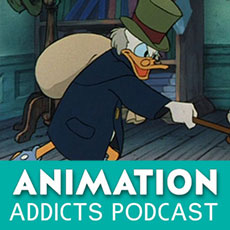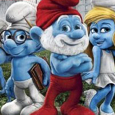Casting Jim Carrey as Scrooge in a big screen version of A Christmas Carol seems such a good idea you wonder why no one thought of it before. Fortunately director Robert Zemeckis did think of it and the result is Disney’s A Christmas Carol, which finds the superstar actor playing the ill-tempered miser who is haunted by the Ghosts of Christmas Past, Present and Yet To Come and taught the true meaning of the holiday season.
Carrey actually plays all three ghosts as well, while several of his fellow cast members, who include Colin Firth, Gary Oldman, Robin Wright Penn and Robert Hoskins, also have multiple roles.
As he was presenting the film earlier this year at the Cannes Film Festival, Scrooge himself talked about his vision of the story, of the acting, but also about his first experience in a motion-capture movie. With the release of the film to theaters, Carrey’s comments have been circulated as a promotional article by Disney, reprinted below.
Question: A Christmas Carol was published more than 150 years ago. Why do think it’s still so popular?
Jim Carrey: It’s one of the greatest stories of transformation and redemption ever written and it’s themes are truly universal. I think everyone can relate to the idea of someone who doesn’t feel loved and therefore doesn’t return love.
Scrooge is faced with looking at his life, at the life he’s had and how his life is going to be if he doesn’t change, and of course that’s shown in a very fantastical way with all these ghosts who visit him, but who hasn’t had a glimpse of that in their own lives? Who hasn’t looked at the future and gone ‘Wow! I have to get it together!’
Q: Do you remember reading the story or seeing a film version when you were a child?
JC: Yes, my introduction to A Christmas Carol was the version starring the British actor Alastair Sim [from 1951]. He did such an amazing job of bringing Scrooge to life. It was like he had a bad taste in his mouth the whole time and he was so bitter to the core that you felt his pain in such an excruciating way, and that’s what I wanted to bring to this: the bitterness that a loveless life brings to someone.
There’s that expression that by the time you’re fifty you have the face you deserve, and I certainly believe that your thoughts and your feelings do eventually form your looks. Scrooge is like a road map of pain.
Q: You mentioned the Alastair Sim film of A Christmas Carol, which is just one of something like fifty or sixty different film versions. Did you have to be convinced that Robert Zemeckis had an approach that made the story worth telling again?
JC: When you can bring a story to people in a way that hasn’t been seen before so that it leaps out of the screen and really touches them, then that’s exciting to me. I’ve followed all of Robert’s films – Roger Rabbit, Cast Away,The Polar Express and so on – and his artistry is such that I knew he could do something original.
Q: Scrooge is a truly iconic character. What was the best part of playing him?
JC: I really love getting inside the head of a character, which probably sounds like a cliché but I’ve always liked psychology and trying to understand why people become who they are. I also liked Robert’s idea that I should play all the spirits, which I believe is brilliant because all the different spirits could just be different aspects of Scrooge’s character. So it’s all very Freudian.
Q: You also had to play Scrooge at different ages…
JC: If you look at it like that, it’s about eight different characters because I had to have the mentality of a seven-year-old Scrooge and then the slightly older adolescent Scrooge, who suddenly realizes that no one is going to pick him up from the orphanage when everybody else has somewhere else to go, and so on. And, of course, your voice changes as you get older, which was a challenge in itself, as well as several different accents for the spirits.
Q: How about the technical aspects of the film? It’s a performance capture film, which I don’t think is very well understood…
JC: No, I think people think it’s like voice-over work, but I’d say it’s more like doing a play. All the actors are in a room together and give a complete performance that is captured by a camera. It’s just that those images are then processed by computer to give the film its amazing look.
Q: So it feels quite natural?
JC: Yes, apart from the fact that you have to wear a strange spandex suit and something that looks like a bicycle helmet that has several cameras in it, which is odd when you’re doing close-ups. I had some scenes with Robin Wright Penn that were just clank, clank, clank. It was like we were locking antlers.
Q: Finally, I wonder if you think there is a moral behind A Christmas Carol and how you would express it?
JC: I think the moral of the tale is to love: to love yourself and to love the people around you and to know that you can make a difference in someone else’s life.





